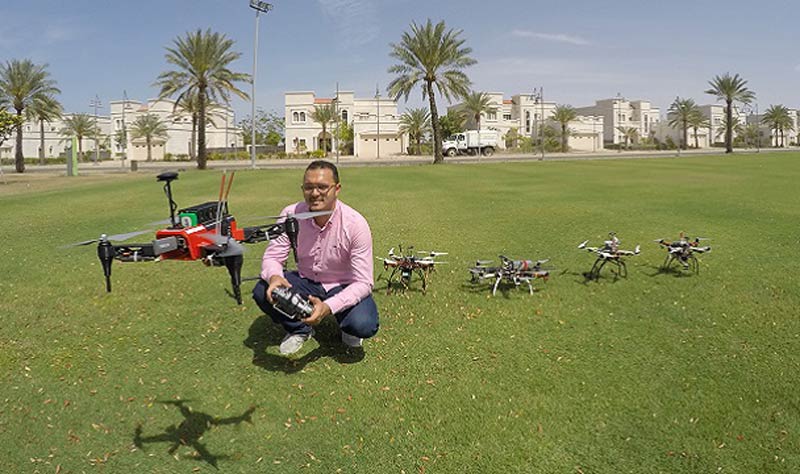
News
Drones That Can ‘Talk’ to Each Other: Researchers Improve Autonomy
Drones are most often piloted remotely, one human for one drone. Indeed, there are examples of drone swarm technology, such as Intel’s Shooting Stars which were recently used to create a Time Magazine cover, or the underwater diving drone swarms made by Aquabotix.
However, such technology requires sophisticated and centralised hardware and software to control and relay instructions for numerous drones.
This got a team of scientists from Saudi Arabia’s KAUST University thinking – what if a group of drones could ‘talk’ to each other instead of having to check back with a central ‘base’?
Mohamed Abdelkader, one of the researchers, recognised the potential of drones that could operate with a degree of autonomy. By operating as a team on a peer-to-peer network, almost any given task could be made easier.
Giving UAVs more autonomy makes them an even more valuable resource - Mohamed Abdelkader Click To Tweet
“Monitoring the progress of a drone sent out on a specific task is far easier than remote-piloting one yourself. A team of drones that can communicate among themselves provides a tool that could be used widely, for example, to improve security or capture images simultaneously over a large area,” he said in a press release.
Working on the project with colleagues under the guidance of Jeff Shamma, Abdelkader developed a group of lightweight custom-built drones with a decentralised architecture, low computing power and a wifi module that would allow them to communicate as a group.
The benefits of a lo-fi, peer-to-peer system like this are many. In addition to being cheaper to set up, redundancy is spread across the network and the network can continue to operate even if one link should break.
“A centralized architecture takes significant computing power to receive and relay multiple signals, and it also has a potential single point of total failure–the base station,” explains Shamma. “Instead, we designed a distributed architecture in which the drones coordinate based on local information and peer-to-peer communications.”
The team tested out their ‘drone team’ by putting them through a simple children’s ‘capture the flag’ game. The team of drones worked together to defend a flag while an ‘intruder’ drone, piloted by one of the researchers, tried to take the flag.
The test enabled the researchers to check if their algorithms – which are based on just enough but not too much messaging, at a rate that allows optimum reaction times – stood up under unpredictable conditions.
They reported that their algorithms did indeed work well, both indoors and in an outdoor environment.
“Each of our drones makes its own plan based on a forecast of optimistic views of their teammates’ actions and pessimistic views of the opponent’s actions,” explains Abdelkader. “Since these forecasts may be inaccurate, each drone executes only a portion of its plan, then reassesses the situation before re-planning.”
The software is available now as open source, and the team hopes that it will provide a test-bed for further applications. Their findings were presented earlier this at ICRA2018.


















